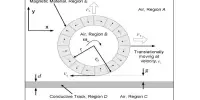The world’s largest turbulence simulation, known as the “Astro-Giga-Turbulence” simulation, uses supercomputers to simulate the flow of energy in astrophysical plasmas. These simulations help scientists better understand the complex dynamics of turbulent plasmas in space, such as those found in galaxy clusters and supernova remnants.
In order to understand how the “solar corona,” the atmosphere that surrounds the Sun, may be far hotter than the solar surface that emits it, researchers have discovered a hitherto unknown heating process.
The discovery at the Princeton Plasma Physics Laboratory (PPPL) of the U.S. Department of Energy (DOE) may help in solving a variety of astrophysical conundrums, including star formation, the origin of the universe’s large-scale magnetic fields, and the capacity to forecast eruptive space weather events that can interfere with cellular service and shut down power grids on Earth. Understanding the heating process also has implications for fusion research.
Breakthrough
“Our direct numerical simulation is the first to provide clear identification of this heating mechanism in 3D space,” said Chuanfei Dong, a physicist at PPPL and Princeton University who unmasked the process by conducting 200 million hours of computer time for the world’s largest simulation of its kind.
“Current telescope and spacecraft instruments may not have high enough resolution to identify the process occurring at small scales,” said Dong, who details the breakthrough in the journal Science Advances.
The process known as magnetic reconnection, which violently splits and reunites magnetic fields in plasma the soup of electrons and atomic nuclei that makes up the solar atmosphere is the secret ingredient.
It was demonstrated by Dong’s modeling how quickly the magnetic field lines reconnected, converting the large-scale chaotic energy into small-scale internal energy. Due to this efficient conversion of turbulent energy to thermal energy at tiny scales, the corona is effectively heated.
“Think of putting cream in coffee,” Dong said. “The drops of cream soon become whorls and slender curls. Similarly, magnetic fields form thin sheets of electric current that break up due to magnetic reconnection. This process facilitates the energy cascade from large-scale to small-scale, making the process more efficient in the turbulent solar corona than previously thought.”
According to him, reconnection cannot interfere with the transmission of energy across scales when the reconnection process is slow and the turbulent cascade is swift. However, reconnection can more effectively shift the cascade toward small scales when it accelerates to a pace that exceeds the typical cascade rate.
In order to create chains of short, twisted lines known as plasmoids, it breaks and rejoins the magnetic field lines. The report claims that this alters the concept of the turbulent energy cascade, which has been widely accepted for more than fifty years.
The discovery accelerates the flow of energy from large to small scales and strongly heats the corona at these scales by correlating the energy transfer rate to the rate at which the plasmoids grow.
The most recent discovery shows a regime with a solar corona-like magnetic Reynolds number that is unprecedentedly big. The high energy transfer rate of the turbulent cascade is characterized by the huge number.
“The higher the magnetic Reynolds number is, the more efficient the reconnection-driven energy transfer is,” said Dong, who is moving to Boston University to take up a faculty position.
200 million hours
“Chuanfei has carried out the world’s largest turbulence simulation of its kind that has taken over 200 million computer CPUs (central processing units) at the NASA Advanced Supercomputing (NAS) facility,” said PPPL physicist Amitava Bhattacharjee, a Princeton professor of astrophysical sciences who supervised the research.
“This numerical experiment has produced undisputed evidence for the first time of a theoretically predicted mechanism for a previously undiscovered range of turbulent energy cascade controlled by the growth of the plasmoids.”
“His paper in the high-impact journal Science Advances completes the computational program he began with his earlier 2D results published in Physical Review Letters. These papers form a coda to the impressive work that Chuanfei has done as a member of the Princeton Center for Heliophysics,” a joint Princeton and PPPL facility. “We are grateful for a PPPL LDRD (Laboratory Directed Research & Development) grant that facilitated this work, and to the NASA High-End Computing (HEC) program for its generous allocation of computer time.”
With the help of present and upcoming spacecraft and telescopes, it will be possible to examine the implications of this discovery in astrophysical systems at various sizes. Unpacking the energy transfer process across scales will be crucial to solving key cosmic mysteries, the paper said.
















